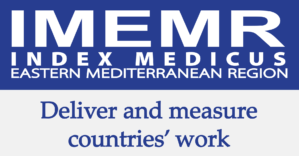Association of Serum Ferritin with Risk of Anemia in Non-Diabetic Adolescents with Family History of Type 2 Diabetes Mellitus
DOI:
https://doi.org/10.53685/jshmdc.v2i2.77Keywords:
ferritin, insulin resistance, type 2 diabetes mellitusAbstract
Background: Controversy occurs in the relationship between serum ferritin levels, insulin resistance and risk of developing anemia in adolescents with family history of diabetes.
Aims & Objectives: This study was designed to find out the association between serum ferritin levels with risk of developing anemia in non-diabetic adolescents with family history of type 2 diabetes mellitus (T2DM).
Materials & Methods: A descriptive cross-sectional was conducted in a local medical institute of Lahore. Study included 50 non-diabetic, non-obese male / female adolescent with family history of type 2 diabetes mellitus and 50 healthy male/female non-obese adolescents without family history of T2DM considered as controls. Level of serum ferritin and serum insulin was estimated by Enzyme Linked Immunosorbent Assay. Blood glucose was estimated by auto-analyzer. Insulin resistance was calculated by HOMA-IR index and beta cell function was assessed by HOMA- beta index.
Results: Levels of fasting blood sugar, insulin resistance were found to be increased with decreased level of serum ferritin and decrease beta cell function in both male as well as female cases as compared to controls. Negative correlation was found between serum ferritin and insulin resistance while a positive correlation was found between serum ferritin and beta cell function.
Conclusions: Low level of serum ferritin is associated with reduced beta cell function and increased insulin resistance. This may increase the risk of developing iron deficiency anemia that can affect both immune system as well as increase susceptibility to infections.
References
Christian P, Smith ER. Adolescent undernutrition: global burden, physiology, and nutritional risks. Ann Nutr Metab. 2018; 72(4): 316–328. DOI: https://doi.org/10.1159/000488865
Levy-Marchal C, Arslanian S, Cutfield W, Sinaiko A, Druet C, Marcovecchio ML et al. Insulin resistance in children: consensus, perspective, and future directions. Insulin Resistance in Children Consensus Conference Group. J Clin Endocrinal Metab. 2010; 95(12): 5189-5198. DOI: https://doi.org/10.1210/jc.2010-1047
American Diabetes Association. Diagnosis and classification of diabetes mellitus. Diabetes Care 2013; 36: S67–S74. DOI: https://doi.org/10.2337/dc13-S067
Liu J, Li Q, Yang Y, Ma L. Iron metabolism and type 2 diabetes mellitus: A meta-analysis and systematic review. JDI 2020 11(4): 946-955 DOI: https://doi.org/10.1111/jdi.13216
Simcox JA, McClain SA. Iron and Diabetes Risk. Cell Metabolism. 2013; 17(3): 329-341. DOI: https://doi.org/10.1016/j.cmet.2013.02.007
Soliman AT, De Sanctis V, Yassin M, Soliman N. Iron deficiency anemia and glucose metabolism. Acta Biomed. 2017; 88(1): 112-118.
Fasil A, Biadgo B, Abebe M. Glycemic control and diabetes complications among diabetes mellitus patients attending at University of Gondar Hospital, Northwest Ethiopia. Diabetes. Metab Syndr Obes. 2019; 12: 75-83. DOI: https://doi.org/10.2147/DMSO.S185614
Manios Y, Moschonis G, Chrousos GP, Lionis C, Mougios V, Kantilafti M et al. The double burden of obesity and iron deficiency on children and adolescents in Greece: the Healthy Growth Study. J Hum Nutr Diet. 2013; 26(5): 470-478. DOI: https://doi.org/10.1111/jhn.12025
Shattnawi, KK, Alomari MA, Al-Sheyab, Salameh AB. The relationship between plasma ferritin levels and body mass index among adolescents. Sci Rep 2018; 8: 15307. DOI: https://doi.org/10.1038/s41598-018-33534-4
Kim MK, Chon SJ, Jung YS, Kim BO, Noe EB, Yun BH, et al. The Relationship between Serum Ferritin Levels and Insulin Resistance in Pre- and Postmenopausal Korean Women: KNHANES 2007– 2010. PLoS ONE 2016; 11(6): e0157934. DOI: https://doi.org/10.1371/journal.pone.0157934
Vaquero MP,Martinez- Mauedo D, Zapatera B, Gallego-Narbon A, Saura-Calixto FF, Perez-Jimenz J. Serum Ferritin, a predictor of insulin resistnace? Clin Nutr 2018; 37(Supp 1): S260 DOI: https://doi.org/10.1016/j.clnu.2018.06.1918
Altunoğlu E, Müderrisoğlu C, Erdenen F, Ulgen E, Ar MC. The impact of obesity and insulin resistance on iron and red blood cell parameters: a single center, cross-sectional study. Turk J Haematol. 2014; 31(1): 61-67 DOI: https://doi.org/10.4274/Tjh.2012.0187
Strage EM, Ley CJ, Forkman, J. Ohuland M, Stadig S, Bergh A et al. Homeostasis model assessment, serum insulin and their relation to body fat in cats. BMC Vet Res. 2021; 17:34 DOI: https://doi.org/10.1186/s12917-020-02729-1
Einhorn D. American College of Endocrinology position statement on the insulin resistance syndrome. Endocrine practice. 2003; 9(3): 237-252 DOI: https://doi.org/10.4158/EP.9.S2.5
Cersosimo E, Solis-Herrera C, Trautmann ME, Malloy J, Triplitt CL. Assessment of pancreatic β-cell function: review of methods and clinical applications. Curr Diabetes Rev. 2014; 10(1): 2-42. DOI: https://doi.org/10.2174/1573399810666140214093600
Ratner B. The correlation coefficient: Its values range between +1and−1, or do they? J Target Meas Anal Mark 2009; 17: 139–142. DOI: https://doi.org/10.1057/jt.2009.5
Seyoum Y, Humblot C, Nicolas G, Thomas M, Baye K. Iron deficiency and anemia in adolescent girls consuming predominantly plant-based diets in rural Ethiopia. Sci Rep 2019; 9:17244. DOI: https://doi.org/10.1038/s41598-019-53836-5
Hamilton MT, Hamilton DG, Zderic TW. Sedentary behavior as a mediator of type 2 diabetes. Med Sport Sci. 2014; 60: 11-26. DOI: https://doi.org/10.1159/000357332
Bugianesi E, Manzini P, D'Antico S, Vanni E, Longo F, Leone N, Massarenti P, Piga A, Marchesini G, Rizzetto M. Relative contribution of iron burden, HFE mutations, and insulin resistance to fibrosis in nonalcoholic fatty liver. Hepatology. 2004. 39(1): 179-187. DOI: https://doi.org/10.1002/hep.20023
Davis, M.R., Hester, K.K., Shawron, K.M. Lucas EA, Smith BJ, Clarke SL. Comparisons of the iron deficient metabolic response in rats fed either an AIN- 76 or AIN-93 based diet. Nutr Metab (Lond) 2012; 9: 95 DOI: https://doi.org/10.1186/1743-7075-9-95
Luzi L, Radaelli MG. Influenza and obesity: its odd relationship and the lessons for COVID-19 pandemic. Acta Diabetol. 2020; 57: 759-764. DOI: https://doi.org/10.1007/s00592-020-01522-8
Zhu Z, Sudfeld CR, Cheng Y. Qi Qi, Shaoru Li, Mohamed E et al. Anemia and associated factors among adolescent girls and boys at 10–14 years in rural western China. BMC Public Health 2021; 21: 218 DOI: https://doi.org/10.1186/s12889-021-10268-z
Aurino E. Do boys eat better than girls in India? Longitudinal evidence on dietary diversity and food consumption disparities among children and adolescents. Econ Hum Biol. 2017; 25: 99–111 DOI: https://doi.org/10.1016/j.ehb.2016.10.007
Attard S, Herring A, Wang H, Howard AG, Thompson AL, Adair LS et al. Implications of iron deficiency/anemia on the classification of diabetes using HbA1c. Nutr & Diabetes 2015; 5:e166 DOI: https://doi.org/10.1038/nutd.2015.16
Mauvais-Jarvis F. Gender differences in glucose homeostasis and diabetes. Physiol Behav. 2018; 187: 20-23 DOI: https://doi.org/10.1016/j.physbeh.2017.08.016
Ali A, Taj A, Ahmed MU, Tabrez E. Frequency of impaired fasting glucose in first-degree relatives of Type-II diabetic patients and its association with Body Mass Index. Pak J Med Sci. 2020; 36(3): 407-411 DOI: https://doi.org/10.12669/pjms.36.3.57
Yabe D, Seino Y, Fukushima M, Seino S. β Cell Dysfunction Versus Insulin Resistance in the Pathogenesis of Type 2 Diabetes in East Asians. Curr Diab Rep 2015; 15: 36 DOI: https://doi.org/10.1007/s11892-015-0602-9
Ogihara T, Mirmira RG. An islet in distress: beta cell failure in type 2 diabetes. J Diabetes Investig. 2010; 1: 123–133. DOI: https://doi.org/10.1111/j.2040-1124.2010.00021.x
Hughes EA, Patel JV, Bredow Z, Gill PS, Chackathayil J, Agaoglu ES, Flinders P, Mirrielees R. Ferritin as a risk factor for glucose intolerance amongst men and women originating from the Indian subcontinent. Int J Endocrinol. 2015: 6 DOI: https://doi.org/10.1155/2015/924387
Downloads
Published
How to Cite
Issue
Section
License
Copyright (c) 2021 Maira Mahmood, Huma Ashraf, Anoosh Qayyum, Farwa Sijjeel, Naim Ahmad Nizami, Shazia Rashid

This work is licensed under a Creative Commons Attribution-NonCommercial 4.0 International License.
You are free to:
- Share — copy and redistribute the material in any medium or format
- Adapt — remix, transform, and build upon the material
- The licensor cannot revoke these freedoms as long as you follow the license terms.
Under the following terms:
-
Attribution — You must give appropriate credit, provide a link to the license, and indicate if changes were made. You may do so in any reasonable manner, but not in any way that suggests the licensor endorses you or your use.
-
Non Commercial — You may not use the material for commercial purposes.
-
No additional restrictions — You may not apply legal terms or technological measures that legally restrict others from doing anything the license permits.




















